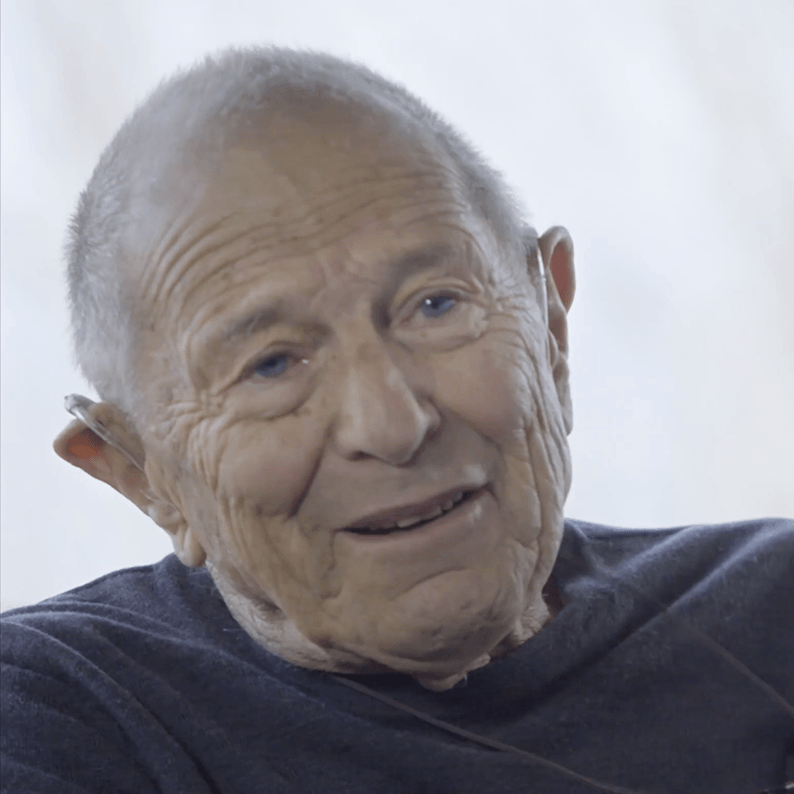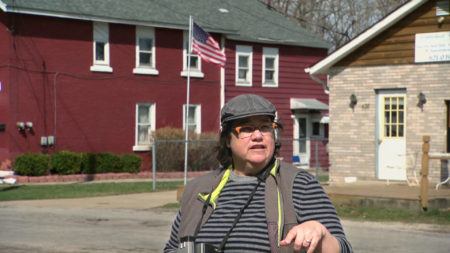Continue playing
(Time remaining: )
Play from beginning
Continue playing "{{ controller.videos[controller.getVideo(controller.currentVideo)].segmentParentTitle}}"
{{controller.videos[controller.getVideo(controller.currentVideo)].title}} has ended.
A Monument to Apartheid in FietasDavid Goldblatt
One of five new films kicking off Art21’s 2019 programming season
Driving around the Johannesburg suburb of Fietas, David Goldblatt (1930–2018) tours the region that became a recurring subject in his photography. Goldblatt began photographing Fietas in 1976, witnessing its evolution from a thriving and diverse community to its erasure by apartheid—leveling the vernacular architecture and forcibly removing its residents. Officially called Pageview, the area had a large Indian population and was a popular shopping destination for people of all ethnicities. A crumbling concrete structure—once the home of Ozzie Docrat, an Indian merchant and hometown hero—embodies Goldblatt’s time in Fietas, representing a failed attempt of government demolition that now stands as “monument to apartheid.”
“Fietas had the elements that were essential for good cities: density, diversity, and complexity,” explains Salma Patel, founder and curator of Fietas Museum. “It was a community of blended cultures.” A Fietas native, Patel recalls seeing Goldblatt navigate the town’s bustling corridors by bicycle. Housed in one of the few original structures that remain, Fietas Museum regularly displays Goldblatt’s photography of the district, paired with images by Paul Weinberg, another noted South African photographer. The collection serves as a pictorial record of Fietas and carries the legacy of David Goldblatt, who passed away just months after the footage featured here was filmed.
Credits
Producer: Ian Forster. Interview: Ian Forster. Editor: Morgan Riles. Camera: Motheo Moeng (SASC). Sound: Ruan van Tonder. Assistant Camera: Matome Thomo. Field Producer: Thuli Lote. Artwork Courtesy: David Goldblatt, Goodman Gallery, & Paul Weinberg. Special Thanks: Liza Essers, Fietas Museum, Damon Garstang, & Salma Patel.
Extended Play is presented by Alta Art. Additional support provided by public funds from the New York City Department of Cultural Affairs in partnership with the City Council; the Art21 Contemporary Council; and by individual contributors.
Closed captionsAvailable in English, German, Romanian, Italian, Japanese, Korean, Chinese, Italian
Through the Art21 Translation Project, multilingual audiences from around the globe can contribute translations, making Art21 films more accessible worldwide. Translate this video now.
Interested in showing this film in an exhibition or public screening? To license this video please visit Licensing & Reproduction.
David Goldblatt was born in Randfontein, South Africa, in 1930. Since the early 1960s up until his passing in 2018, Goldblatt photographed the people, landscapes, and architectural structures of South Africa, using photography as a means of social criticism. Chronicling South Africa during apartheid, Goldblatt’s powerful monochrome photographs reveal the stark contrast between the lives of Blacks and Whites as well as the ways that public structures have manifested the citizens’ self-image.
“Had it not been for their photographs, we wouldn’t have a pictorial record of my forebearers.”
Salma Patel, Founder of Fietas Museum
Capturing Community
Graciela Iturbide
Catherine Opie



